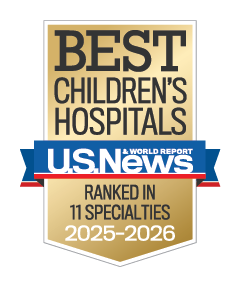

Pediatric liver tumors are rare, accounting for just 1 to 2% of cancers in children.1 Hepatoblastoma, the most common malignant liver tumor in childhood,1 has an incidence rate of 1.6 cases per million.2 There is an increasing incidence, however, of about 4 % per year in the United States and 2.5 % per year in Europe.3 Through clinical trials and innovative initiatives, researchers around the globe are working tirelessly to better understand pediatric liver cancer and develop novel therapies that will lead to better outcomes.
“A decade ago, we knew very little about the biology of hepatoblastoma,” said Arun Rangaswami, MD, pediatric hematologist-oncologist and professor of clinical pediatrics at UCSF Benioff Children’s Hospitals. “Our knowledge has significantly increased due to ongoing collaborative, international efforts.”
Uncovering new data
One North American consortium, the Children’s Oncology Group Liver Tumor Committee, is aiming to better define prognostic characteristics of hepatoblastoma based upon molecular phenotyping, among other biological approaches. Goals include advancing multidisciplinary care and discovering novel therapies to better understand and treat pediatric liver tumors of all kinds.4
Another significant source of invaluable research data is the Childhood Hepatic tumors International Collaboration (CHIC), the largest database for any pediatric rare tumor.5 The CHIC database, which now contains more than 2,000 cases of treated hepatoblastoma from many countries, aims to overcome challenges to clinical research in rare tumors through global data sharing.6
“Across multiple consortia and trials, we were able to perform analyses of risk factors in the CHIC database and develop a risk grouping system, which allows us to tailor treatment to a specific patient’s risk category,” said Rangaswami, who serves as CHIC co-chair. “That category is informed by a number of characteristics, such as the extent of the disease within the liver, the presence or absence of metastatic disease and the age of the patient, among other characteristics. We then stratify patients into treatment arms that are specific to that patient’s risk group. It’s a refinement of previous approaches to treatment, which were largely agnostic to disease stage.”
Advances in treatment
Research initiatives such as these have formed the foundation of current treatment strategies, while innovative clinical trials are leading to the development of novel therapies that help lead to better outcomes and higher quality of life for patients.
“Outcomes for high-risk hepatoblastoma patients used to be quite poor, often 40% or less,” Rangaswami said. “Now that treatment strategies have advanced, outcomes have improved greatly, ranging as high as 90% for three-year event-free survival.”
Additionally, quality of life for many pediatric patients undergoing treatment has improved. For example, high-frequency hearing loss is a common side effect of cisplatin, a chemotherapeutic agent frequently used for hepatoblastoma.7 Rangaswami coauthored a study finding that sodium thiosulfate administered six hours after chemotherapy significantly reduced high-frequency hearing loss in patients with standard-risk hepatoblastoma.
Blazing new trails
Through clinical trials, researchers continue to seek new ways to treat all types of pediatric liver cancer.
One recently opened trial uses cellular therapy similar to CAR (chimeric antigen receptor) T-cell therapy to treat patients with relapsed and refractory liver cancer that secretes alpha fetoprotein (AFP).8 Many types of primary liver tumors, both hepatoblastoma and others, produce AFP.9 UCSF Benioff Children’s Hospitals are one of two centers in the country offering this protocol.6
“This is a type of treatment that seeks to educate a patient’s own T cells to recognize and target tumor cells,” Rangaswami said. “This is only the second trial using this approach to treat liver tumors. The first trial used a CAR T product directed against a different antigen. We’re very excited to offer this to patients who have disease that has relapsed in the face of frontline and second-line treatment.”
A phase 2 trial of another innovative type of immunotherapy, immune checkpoint inhibition, led by the Dana Farber Cancer Center, is also underway at UCSF Benioff Children’s Hospitals, as well as three other facilities across the country.6
“In this trial, we are studying an immune checkpoint inhibitor known as pembrolizumab in patients who have relapsed or refractory hepatocellular carcinoma (HCC) or an intermediate type of liver cancer between hepatoblastoma and hepatocellular carcinoma called hepatocellular neoplasm, not otherwise specified, or HCN, NOS,” Rangaswami said. “Innovative treatments such as this approach and using T cell–directed therapies will hopefully be effective strategies for patients who suffer from relapsed diseases in the future.”
Rangaswami is also participating in the development of two pilot trials supported by the Children’s Oncology Group Liver Tumor Committee. Currently in development, these trials offer innovative therapies to patients who have high-risk hepatoblastoma as well as fibrolamellar carcinoma (FLC), a type of primary liver cancer that typically affects adolescents and young adults with no prior history of liver disease.10
The future of pediatric liver cancer therapy
Rangaswami and fellow researchers hope that by continuing clinical trials and studying the molecular makeup of pediatric liver cancers, more great strides will soon be translated into new treatments.
“As we learn more about the biology of these tumors, we hope to be able to stratify patients to receive more individualized therapy based upon biological characteristics of their tumors,” he said. “Using the combined approaches of biologists around the globe, we now know that there are a number of prognostic factors that have been identified to drive hepatoblastoma and to influence risk. What we don't have yet is a unified biological risk stratification. It is my hope that [such a stratification] will be developed in the next 10 years.”
To refer a patient to the Pediatric Liver Tumor and Hepatoblastoma Clinic at UCSF Benioff Children’s Hospitals, use our online form or call the Pediatric Access Center at (877) 822-4453 (877-UC-CHILD) for assistance.
Clinical Trials:
Checkpoint Inhibition in Pediatric Hepatocellular Carcinoma
ET140203 T Cells in Pediatric Subjects With Hepatoblastoma, HCN-NOS, or Hepatocellular Carcinoma
______________________________________________________________________
1 https://www.cancer.gov/types/liver/childhood-liver-cancer
2 https://pubmed.ncbi.nlm.nih.gov/17977712
4 https://onlinelibrary.wiley.com/doi/full/10.1002/pbc.30576
5 https://www.sciencedirect.com/science/article/abs/pii/S0959804915008692
6 Interview with Dr. Rangaswami
7 https://www.cancer.gov/news-events/cancer-currents-blog/2018/cisplatin-hearing-loss and https://www.chla.org/newsroom/press-release/cisplatin-and-hearing-loss-until-now-unquantified-risk and https://www.cancer.gov/news-events/cancer-currents-blog/2022/fda-sodium-thiosulfate-cisplatin-hearing-loss-children
8 https://aacrjournals.org/clincancerres/article/23/2/478/275512/Targeting-Alpha-Fetoprotein-AFP-MHC-Complex-with and interview with Dr. Rangaswami
9 https://medlineplus.gov/lab-tests/alpha-fetoprotein-afp-tumor-marker-test/
10 https://www.cancer.gov/pediatric-adult-rare-tumor/rare-tumors/rare-digestive-system-tumors/fibrolamellar-hepatocellular-carcinoma and https://rarediseases.info.nih.gov/diseases/9396/fibrolamellar-carcinoma



